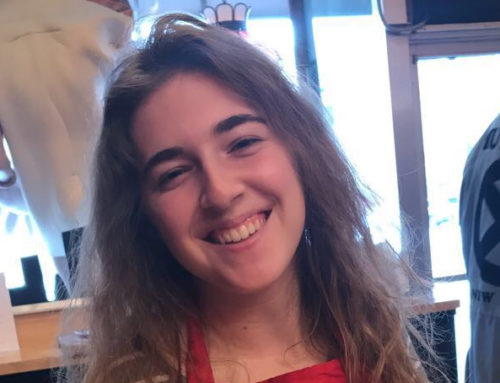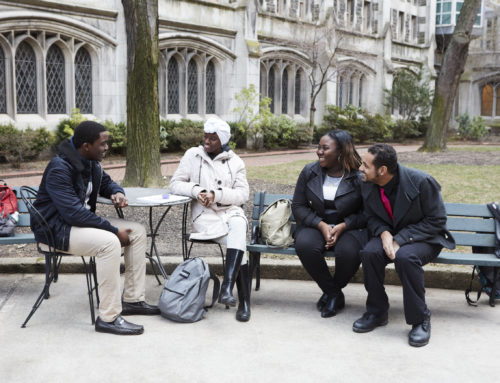CareerU with Ryan, Volume II
by Ryan Marcus

We would all love to be the best version of ourselves every day we wake up. But, we’re human: we have bad days, we make mistakes and we have shortcomings that can be huge obstacles in our life. You could choose to ignore your shortcomings and continue on with your life as is. This is the easy road, which many people choose. However, easy choices almost always lead to a hard life, plagued with shortcomings and unhappiness. The other road you can take is more difficult, but time after time proves to be the one that will bring happiness. You must look inside yourself, observe and understand where you need to grow, and then create action plans in order to improve and be the best version of yourself.
First and foremost, no one is perfect. We all have shortcomings. It is important to understand that there is nothing wrong with that. However, ignoring them and only focusing on where you succeed will not breed success. Instead, you must be actively aware of where you need to improve. This begins with a keen sense of self-awareness. You must also be able to observe the reactions and feelings of others. This will create a continuous feedback loop that you can utilize to identify weaknesses and make a plan to conquer them.
Let’s look at an example to better focus in on this concept of self-improvement: John and Molly are colleagues who work on the same team. They are both top performers and are continually recognized for their contributions. Their team meets weekly to discuss progress on various projects. During these meetings, John tends to talk over Molly before she has completed their thoughts, leaving Molly feeling frustrated and unheard. The team manager approaches John about this behavior, and John apologizes immediately: “I did not even realize I was doing anything wrong. I will do better next time.” However, at the next meeting, and the meeting after that, John continues to talk over Molly, rupturing the team’s cohesiveness.
Even though John has verbally acknowledged and apologized for his behavior, he has not taken steps to improve. So, what could John do to correct his actions and tackle self-improvement?
1.Identify the area for improvement
Actively observe both your actions and the impact they make on yourself and others. A good way to do this is to answer the question, “How will what I say or do in this situation affect myself and others?” Note down that answer. For John in our example, he should note down that when he speaks over Molly, she seems to get irritated.
2.Think about how to improve, seeking feedback when needed
Once you have identified what you want to improve, write down a few ways you might be able to change your behavior to create a positive impact. I often like to seek feedback and advice from mentors. Having a great group of mentors is invaluable, as it acts as a system of checks and balances on your actions and decisions. John might seek feedback from peers on his team, his boss, or someone outside of work with a unique perspective.
3.Create an action plan
Implement certain steps needed to improve and ask for help along the way if you need it. For John, he might begin by setting a goal to not interrupt Molly at least one time the next meeting, and then increase the goal to three or four until he finally doesn’t interrupt Molly at all. John could also try putting his pointer finger over his mouth when Molly speaks, reminding him to wait until she is finished speaking.

Continuous self-improvement does not always mean fixing a behavior that has a negative impact; it also means identifying areas you want to grow. Practicing the steps to continuous improvement in situations that are more black and white, like with John and Molly, will help you familiarize yourself with the process, and help you determine what methods are effective and what methods do not help you improve.
Creating a habit of continuous self-improvement will take time and effort. You are not going to find a solution or reach your goal overnight. But, if you are willing to invest in yourself, the benefits will be far more then you can ever imagine. We should all strive to be the best versions of ourselves, leaning into weaknesses where necessary, listening openly to feedback from others, and creating plans to change our behaviors and reach our full potential. Change, albeit difficult, creates paths of success and opens doors for you to further your life. Start that process today by identifying an area to improve and creating your own personal self-improvement plan.
About Ryan Marcus
Originally from Annapolis, MD, Ryan Marcus graduated in 2011 from Wheaton College in Massachusetts with a Bachelor’s degree in Economics. He made his way to New York City in 2011, working as a consultant at Valeocon Management Consulting. In 2016, Ryan joined the recruiting and staffing agency ForceBrands as an Executive Recruiter, where he specializes in the wine and spirits industry and manages the entire hiring process for his clients.
Ryan has been involved with Let’s Get Ready since his move to New York City in 2011. He is a regular volunteer at events such as Career Day and College Application Completion Day, and is active in Let’s Get Ready’s Young Professionals Network. Ryan has been writing the CareerU with Ryan series since July of 2015.
About the CareerU with Ryan Series
Written by community volunteer Ryan Marcus, CareerU with Ryan, Volume II is a career advice article series guiding Let’s Get Ready students in college develop soft skills key to succeeding in their career and life. It is a follow-up series to CareerU with Ryan, Volume I, which focused on the skill set needed to land an internship/job. Volume I is currently available to Let’s Get Ready college students and graduates only. Students can access all ten articles in Volume I by joining the Let’s Get Ready LinkedIn Group, a career resource exclusively for our college students.



